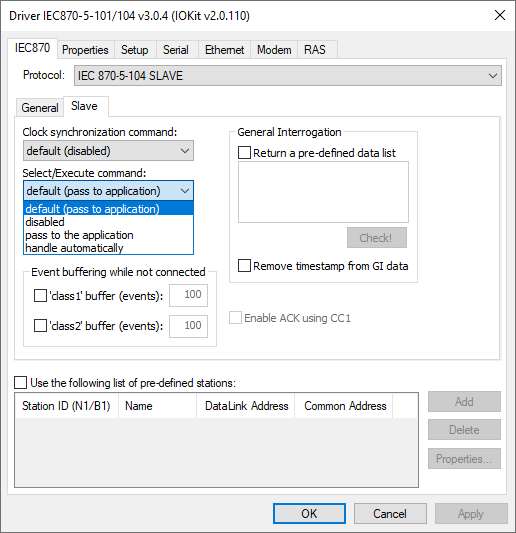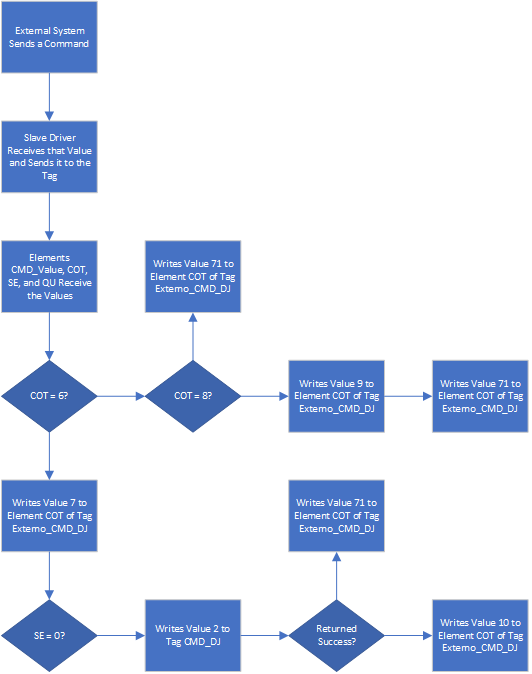Similar to the DNP 3.0 Slave Driver, the IEC 870-5-101/104 Slave Driver also allows selecting the way to handle commands, by using the same options. This configuration is performed in the Select/Execute command option of the Slave tab, after selecting the IEC 870-5-104 SLAVE item in the Protocol option on the IEC870 tab.

Select/Execute command option
The available items are described on the next table.
Available items in the Select/Execute command option
Item |
Description |
|---|---|
Disabled |
All commands received are answered negatively. Basically, this mode forces this Driver to not handle any external command |
Pass to the application |
This the manual mode of receiving commands. These are handled by the application itself, which is responsible for receiving, checking acceptance, performing writings to other drivers, when needed,and sending the return to the external system |
Handle automatically |
All commands received are accepted and sent to the I/O Tag, and the Driver itself informs the external system that the command was accepted. The only responsibility of the application is to handle the value and decide what to do with the command |
The next figure illustrates in a simplified way the handling of commands when this is completely performed by the application. Consider that when an external system sends an Execute command to the Externo_CMD_DJ Tag, this Driver must write the value 2 (two) to the CMD_DJ Tag.

Command handling in IEC 870 Driver
NOTE |
The value 71 in the COT Element indicates that the activation or execution of the command could not be performed. |
For more information about the procedures or scripts to receive commands, please check the I/O Driver's manual.